Divers reveal shipwreck's ancient secrets in latest excavation of famous site

The dive is latest in a decades-long quest to research the Antikythera wreck
Don't Miss
Most Read
An international underwater archaeological expedition has uncovered long-lost secrets from an ancient Greek shipwreck.
Researchers from the Swiss School of Archaeology in Greece have recently finished a month-long dive at the 2,000-year-old Antikythera wreck.
From May 23 to June 20, a team under the supervision of Greece's Ephorate of Underwater Antiquities uncovered a host of new finds.
Professor Lorenz Baumer from the University of Geneva and Dr Angeliki Simosi, Honorary Director of Antiquities, led the fieldwork.
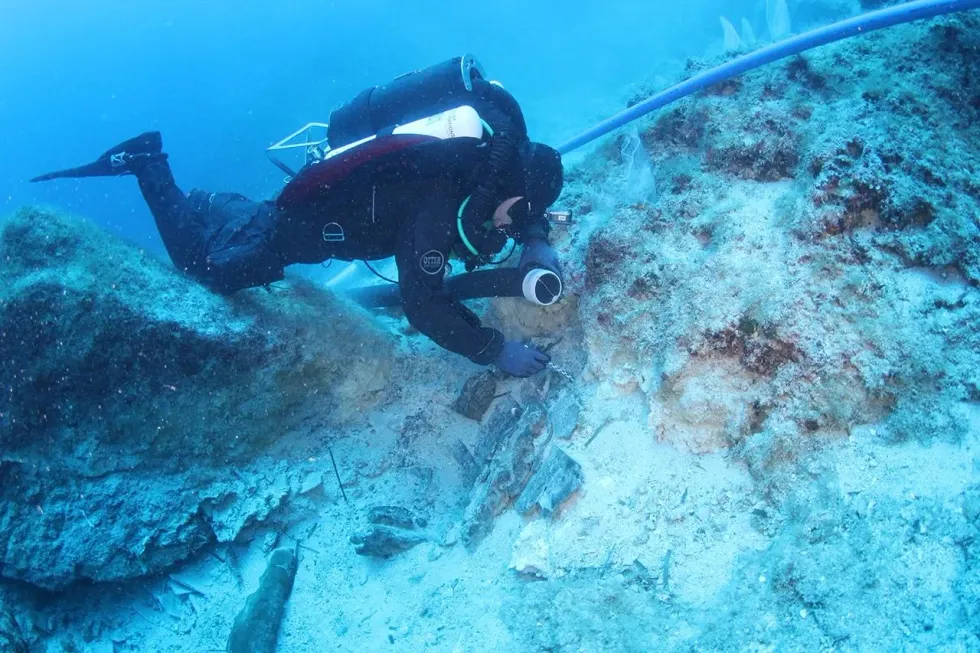
From May 23 to June 20, a team under the supervision of Greece's Ephorate of Underwater Antiquities uncovered a host of new finds
|SWISS SCHOOL OF ARCHAEOLOGY IN GREECE
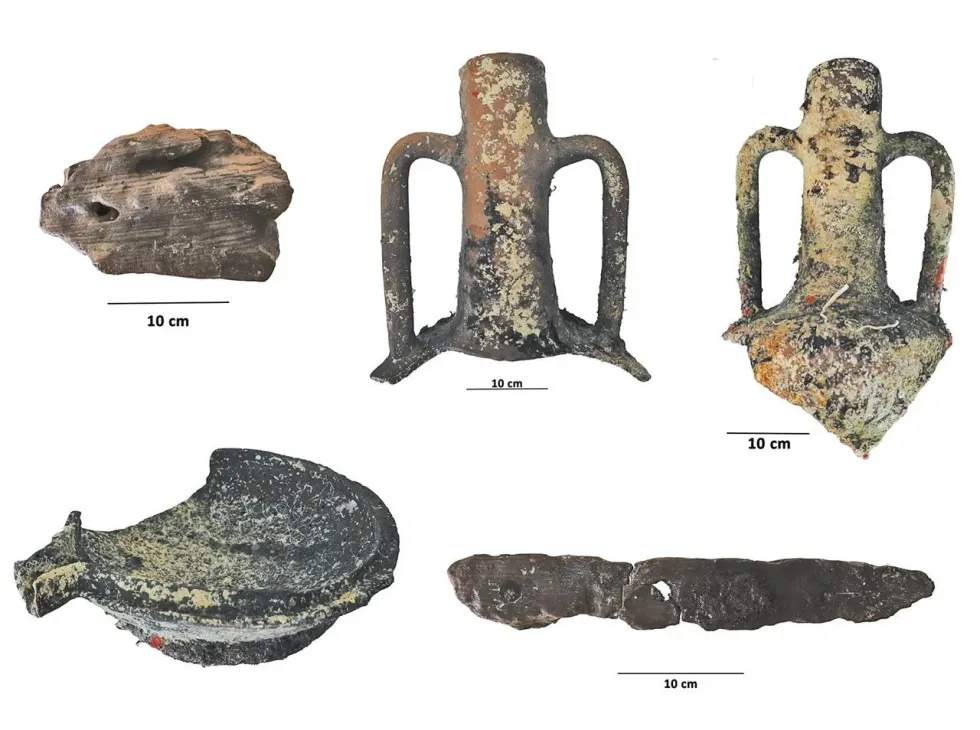
The team discovered a host of ancient Greek fragments in the vessel
|SWISS SCHOOL OF ARCHAEOLOGY IN GREECE
They received support from specialist diver-archaeologists and the Hellenic Coast Guard's Underwater Missions Unit.
And their dive is the latest in a decades-long quest to explore one of the Mediterranean's most significant underwater archaeological sites.
The team's most significant find was an intact set of hull fragments comprising three outer planks attached to an internal frame.
Originally identified in 2024, these connected pieces were excavated this year using a purpose-built support system.
The wooden fragments, likely made from elm and oak, measure approximately 40 centimetres wide and 70 centimetres long.
MORE SHIPWRECK DISCOVERIES:
- Shipwreck discovered after 500 years at the bottom of the ocean may radically change what is known about maritime history
- Mystery shipwreck found off African coast could hold £100MILLION treasure trove
- Mysterious 200-year-old shipwreck discovered by child with metal detector on beach - 'Did not expect to find this!'
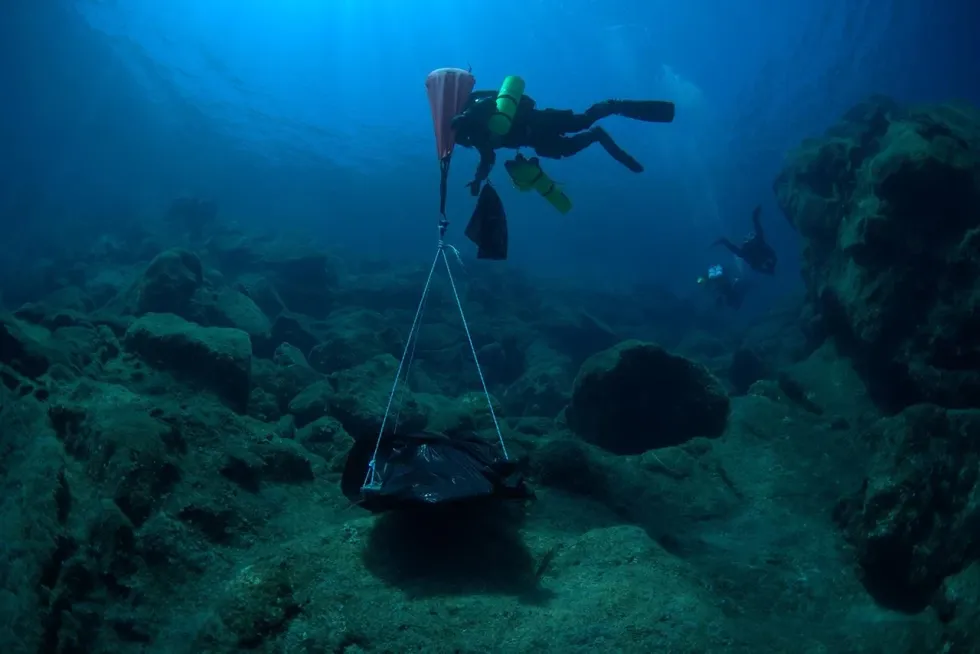
PICTURED: Researchers from the Swiss School of Archaeology in Greece during a dive at the 2,000-year-old Antikythera wreck
|SWISS SCHOOL OF ARCHAEOLOGY IN GREECE
Preliminary dating places them around 235 BC.
Their construction demonstrates what's known as the "shell-first" technique, where the outer shell was assembled before the internal framework.
This method dominated Mediterranean shipbuilding between the fourth and first centuries BC.
The planks' unusual thinness - under 5 centimetres - contrasts with fragments which legendary diver Jacques-Yves Cousteau uncovered in 1976.
Archaeologists also uncovered ancient artistic treasures during the dive.
While removing a rock, they discovered fragments of a naked male statue positioned in the classical contrapposto stance.
Only the marble base containing the lower portion of the left leg could be retrieved, however.
LATEST ARCHAEOLOGY HEADLINES FROM GB NEWS:
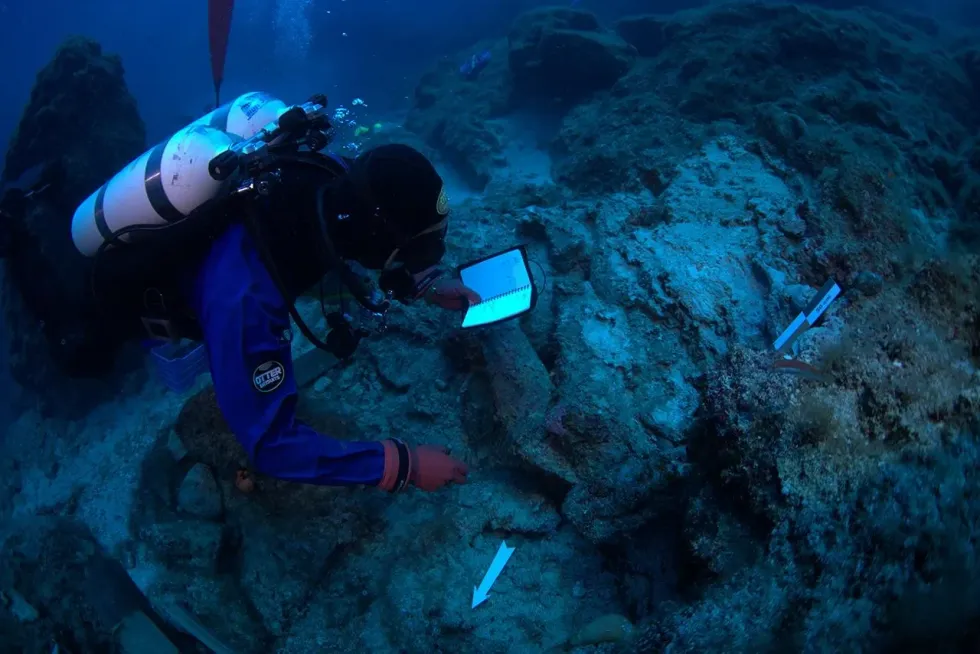
Divers discovered fragments of a naked male statue, but could only retrieve its marble base
|SWISS SCHOOL OF ARCHAEOLOGY IN GREECE
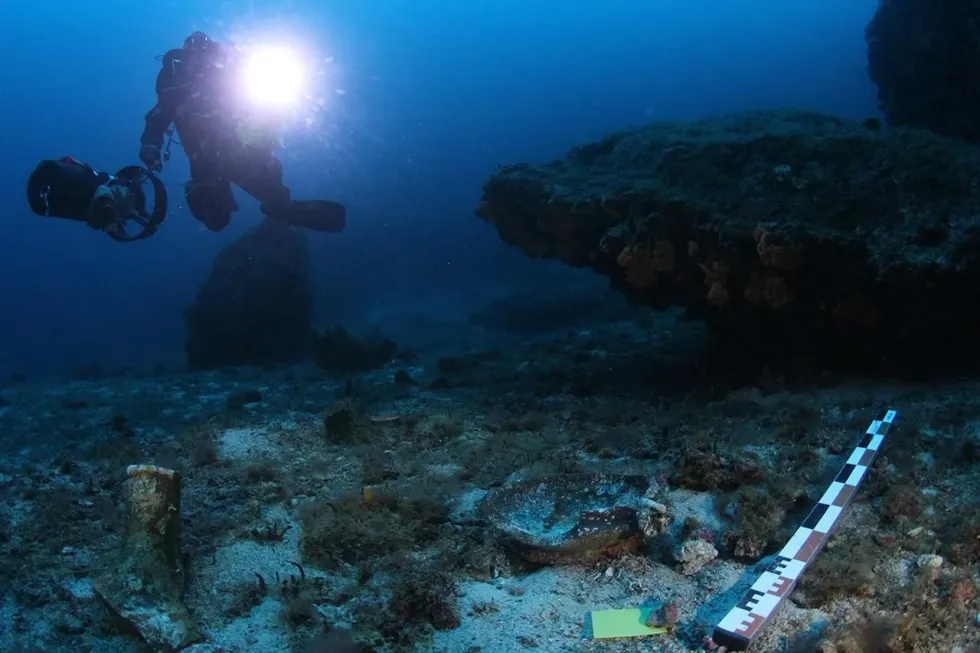
Remaining sections of the ship remain trapped under layers of silt and sediment
|SWISS SCHOOL OF ARCHAEOLOGY IN GREECE
The remaining sections remain trapped under layers of silt and sediment, awaiting future recovery efforts.
Chian amphorae, a type of traditional pot, were found scattered across two distinct zones of the vessel.
And divers also found a terracotta mortar featuring a spout, possibly used for grinding or mixing food items on board.
The expedition employed cutting-edge diving technology, including closed-circuit rebreathers and real-time underwater monitoring via underwater drones supplied by Hublot Xplorations.
The team also documented the site through 3D photogrammetry, and integrated their findings into a "geographic information system", enabling researchers to match up their discoveries with those made in the past.
As they dove, a mobile field lab on Antikythera island allowed researchers on dry land to analyse recovered materials in real time.











